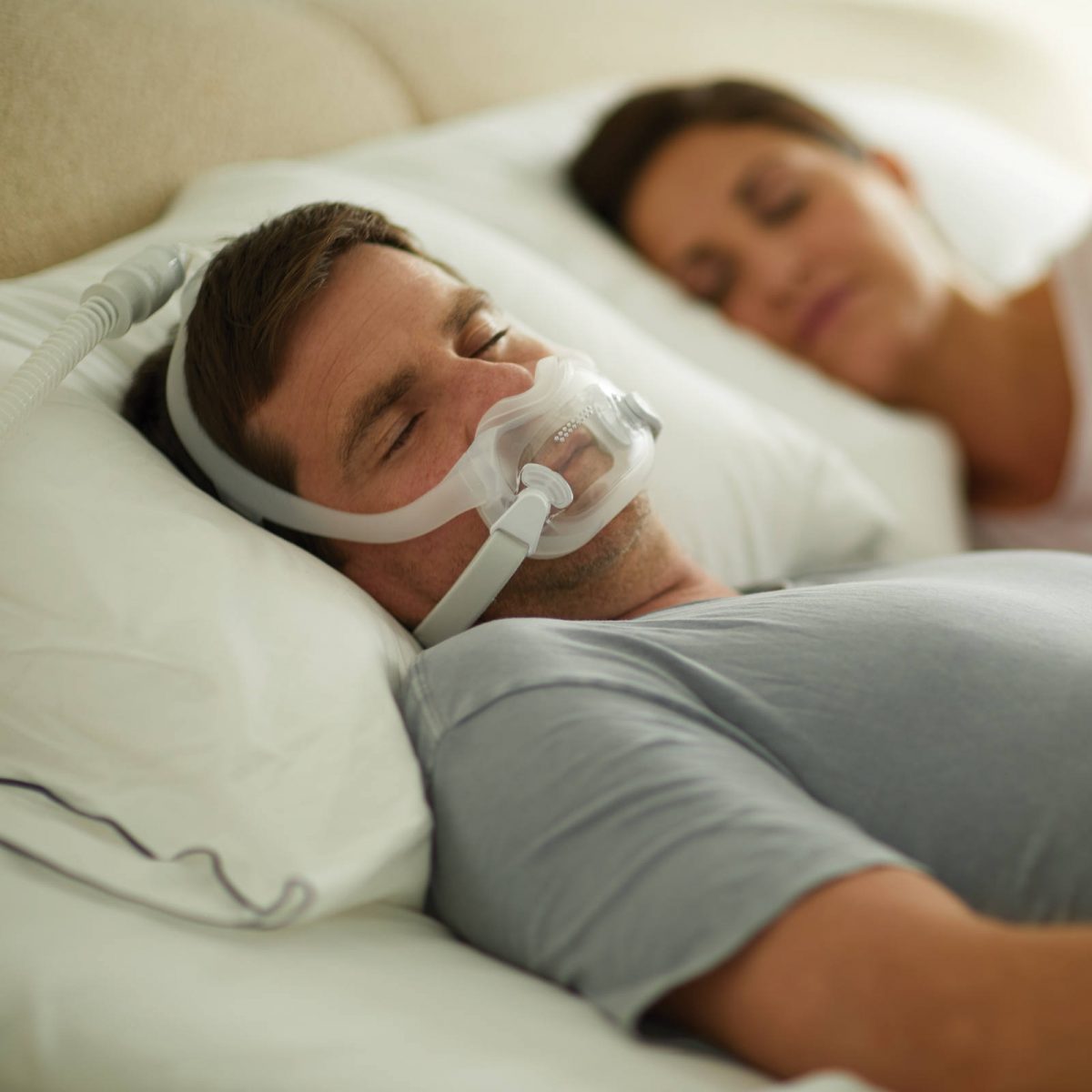Last updated on May 10th, 2021 at 03:59 pm
Several different types of CPAP masks
There are several types of CPAP mask to choose from, and it’s worth noting that each CPAP mask can work with any CPAP machine. Here we explain the differences between each type, who they benefit, who should avoid them, and the most popular CPAP masks in that category. If you need further advice about how to choose a CPAP mask, then please click here. Or contact us, and one of our sleep specialists will help you.
A quick look at the options available, but below we go into much more detail. Click the link of the type of CPAP mask you’re interested in learning about and jump to the relevant part of this post.
Nasal Cushions CPAP Mask, Nasal Pillows CPAP Mask, Full-Face CPAP Mask, Hybrid CPAP Mask and Oral CPAP Mask.
Nasal Cushions CPAP Mask

Used by around 60% of our customers
What they are:
A Nasal Cushion Mask uses a cushion that sits around the perimeter of the nose.
Who are they suitable for:
A Nasal Cushion Mask is a good option for nasal breathers, provided they exclusively breathe through their nose at night and their mouth does not drop open (although a chin strap can prevent that from happening).
Who are they not suitable for:
Mouth breathers, those with severe sinus issues (although the SinuPulse Elite may help with this), those with a deviated septum. Active sleepers and those who find this style of mask claustrophobic or uncomfortable may wish to try a Nasal Pillows Mask instead (see below).
Popular Choices:
Nasal Pillows CPAP Mask

Used by around 15% of our customers
What they are:
Nasal Pillows use small silicone cones that sit on the perimeter of the nostrils. There is usually no contact with the face itself (they are sometimes referred to as “minimal-contact masks” for this reason). They are for those who would otherwise use a Nasal Cushion mask but find them uncomfortable or claustrophobic.
Who are they suitable for:
Those who require a nasal mask but find a nasal cushion mask uncomfortable or claustrophobic, or are active sleepers (i.e. somebody who changes position frequently during sleep).
Who are they not suitable for:
Nasal pillow CPAP masks are for those sufferers with nasal issues such as a deviated septum or mouth breathers. Some may also find the “jets” of air uncomfortable, particularly if using pressures higher than about 12cmH2O.
Popular Choices:
Philips DreamWear Nasal Pillows
Full Face CPAP Mask

Used by around 25% of our customers
What they are:
A Full Face Mask uses a cushion that sits around the perimeter of the mouth and nose. The cushion is usually either silicone or gel, and these are the most commonly used type of CPAP mask.
Who are they suitable for:
Mostly these masks are for mouth breathers or those unsure how they breathe. They are also often used by those with sinus or nasal issues, and by those who are unsure what type of mask would be most suitable.
Who are they not suitable for:
Side sleepers, those with claustrophobia, active sleepers.
Popular Choices:
Hybrid CPAP Mask

Used by around 3% of our customers
What they are:
A Hybrid Mask combines an oral mask with nasal pillows. These masks are designed for users who require a Full Face CPAP Mask but find them claustrophobic, or that a Full Face CPAP Mask causes discomfort on the nasal bridge.
Who are they suitable for:
Those who require a Full Face Mask but find a regular one claustrophobic or cause discomfort on the nasal bridge. Suitable for those who look to read in bed.
Who are they not suitable for
Those with noses that are notably unsymmetrical, some may find the air “jets” from the nasal pillows uncomfortable.
Popular Choices:
Philips Respironics Amara View
Oral CPAP Mask

Used by around 1% of our customers
What they are:
Oral Masks sit between the gums and the lips. An oral mask should only be considered as a last resort if every other mask type has been unsuccessful.
Who are they suitable for:
Sufferers who have tried full face, nasal cushion and nasal pillows masks without success.
Who are they not suitable for:
An Oral CPAP Mask is suitable for any breather or any physical requirement. Generally, people breathe through their noses, breathing exclusively through the mouth while sleeping bypasses many of the body’s natural defence systems, leaving you more prone to contracting illnesses.
Popular Choices



